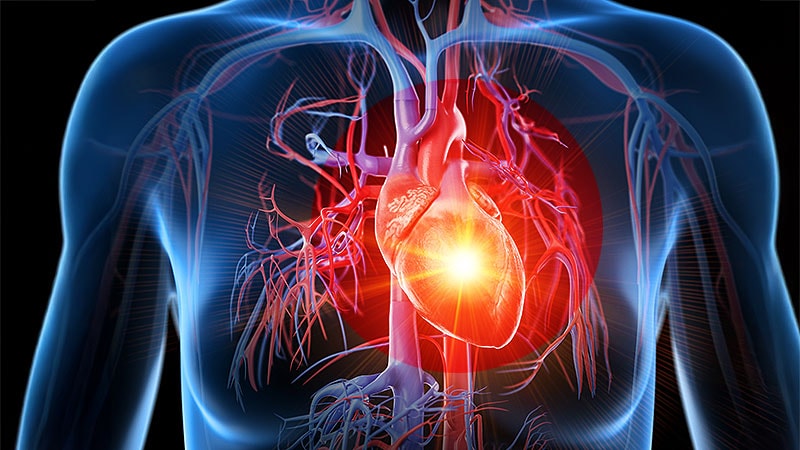[ad_1]
New clinical guidance to help cardiologists navigate the complexity of cardiogenic shock and assess possible cases within the first hour after onset introduces a memory aid — SUSPECT — which stands for symptoms/signs, urine output, sustained hypotension, perfusion, electrocardiogram/echocardiogram, congestion, and triage.
The guidance is the first in a planned series from the American College of Cardiology (ACC) that can be applied in practice when there is not enough evidence to develop consensus statements or clinical practice guidelines. It will be presented at the upcoming American College of Cardiology (ACC) Scientific Session 2025 in Chicago.
For cardiogenic shock and few clinical trials have been conducted to assess approaches, devices, or drugs, said the experts who developed the guidance. So they used large registries of cases and the experience of cardiologists to develop guidance that can help improve outcomes in a syndrome that still takes the lives of 1 in 3 patients.
“We have not been able to move the needle dramatically in decades,” said David Morrow, MD, a cardiologist at Brigham and Women’s Hospital in Boston, who coauthored the guidance.
But as the population ages, the incidence of cardiogenic shock is increasing. And its profile is changing, too.
Cardiogenic Shock is Changing
Over the past 30 years, the majority of randomized and prospective studies of cardiogenic shock “have been in acute myocardial infarction,” said Shashank Sinha, MD, a cardiologist at the Inova Fairfax Medical Campus in Falls Church, Virginia, and another coauthor of the guidance, “But, increasingly, data from registries have shown that non–myocardial infarction causes, mainly heart-failure-related shock, are the most prevalent form.”
The guidance provides a structured framework to help cardiologists take the necessary steps to help a patient and emphasizes the role of the whole medical team. Engaging the team “early and often” can help improve outcomes, Sinha explained.
Because cardiogenic shock can quickly lead to death, the guidance stresses early diagnosis and intervention and provides a decision-making flow chart. After the SUSPECT assessment, initial management can involve escalation to a cardiac intensive care unit or transfer to a higher level of care, such as a level 1 cardiogenic shock hospital. The flow chart guides the shock team through possible interventions, including left heart catheterization, coronary angiography, percutaneous coronary intervention, iliofemoral angiography, right heart catheterization, and temporary mechanical circulatory support, depending on the patient.
Temporary mechanical circulatory support is one area in which there have been clinical trials. Results of trials of intra-aortic balloon pumps and extracorporeal life support have generally been negative. But the 2024 DanGer Shock trial showed that a microaxial flow pump (Impella CP) significantly improved survival compared with standard care.
“DanGer Shock is the landmark trial; the first one [in cardiogenic shock] that met its end point in 25 years,” said Sinha. Before DanGer Shock, the most important trial showed that early revascularization improved outcomes in patients experiencing cardiogenic shock due to acute myocardial infarction.
But the DanGer Shock results do not necessarily mean that flow pumps are the answer, the authors cautioned. The use of the pumps was “limited to selected patients,” particularly those who met specific criteria, such as ST-segment elevation myocardial infarction and low left ventricular ejection fraction, Sinha explained.
And patients treated with the flow pumps had higher rates of bleeding and limb ischemia, so better designs are needed to prevent these effects. “There needs to be a balance,” said Morrow. “By reducing the rate of complications, we can improve the outcomes.”
Although the trial results were positive, “even in the active treatment group in DanGer Shock, death rates were unacceptably high,” he reported. “And we desperately need additional trials in populations that weren’t studied in DanGer Shock” and trials of other therapies.
Complex Decisions
With the paucity of research on mechanical circulatory support, approaches to care, and even the drugs used to treat cardiogenic shock, “how do we match the right therapy to the right patient at the right place and the right time?” asked Sinha.
“We don’t have rigorously compiled data to answer those simple questions we face every day,” added Morrow.
One of those questions is about management on the first day after the onset of cardiogenic shock. “The care in the first 24 hours is so important,” said Morrow. The guidance lays out a “road map” for this period that includes serial reassessment to ensure stabilization, to re-escalate treatments as needed, and eventually to de-escalate treatments. This is particularly important because a patient’s shock stage — assessed using Society for Cardiovascular Angiography and Interventions criteria — can change during the day.
Options for intervention discussed in the guidance include revascularization, structural interventions, ablation, and heart transplantation, depending on the individual patient.
The guidance provides separate decision flow charts for the management of cardiogenic shock due to acute myocardial infarction and due to heart failure. The aim of management is to allow the patient to “live as long as possible with the heart that they have,” said Sinha. Helping the heart recover can involve temporary mechanical circulatory support or left ventricular assist devices, for example. Transplantation is an option if other interventions fail to achieve recovery.
The authors hope the guidance supports practice to improve outcomes, but noted that a research agenda is needed to provide an evidence base. “This document is really a call to action in this area,” said Sinha.
[ad_2]
Source link : https://www.medscape.com/viewarticle/first-hours-crucial-new-guidance-cardiogenic-shock-2025a10007bl?src=rss
Author :
Publish date : 2025-03-27 06:49:00
Copyright for syndicated content belongs to the linked Source.
